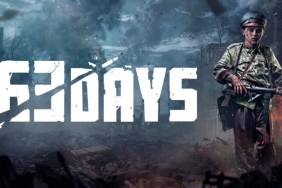Games, as a whole, are too easy. From a publisher and developer’s perspective, it makes sense – create a product that can be played by as many people as possible, and then there’s a good chance they’ll all buy it. The problem is it makes the games dull, unoriginal and utterly pointless.
Did I ever tell you what the definition of insanity is? Playing the same tutorial in a hundred different games.
“You’re Master Price right?” a soldier said to me, a look of awe clearly evident on his face. I grunted. “You’ve saved the world countless times, killed more bad guys than Team America and sniped the evilest man on the planet from 2 miles away!” I rub my grizzled chin stolidly. “Anyway, I’m here to teach you the basics of shooting, can you go over to that training ground?” I choke on my cigar.
I hate the beginning of pretty much every mainstream game I play nowadays. The first one or two hours is a pointless reminder of the most basic facets of gaming – this is how you stab, this is how you parry, this is how you drive. Each time, the tutorials are thinly veiled tutorials mixed with actually important cutscenes, hoisted upon everyone trying to play the game, from first timers to veteran gamers.
Look, I get it. We were all noobs once, trying to work out what to do, how to survive – but that was exactly the point. We had to learn, had to experiment. Getting to grips with gaming was part of the challenge in of itself, and when it was too difficult, or we were too tired, we had tutorials. Separate, to the side, moved elsewhere, not part of the main game. That meant we could learn how to game, and then play the game.
Now, think of how many games start with “Oh, we need to calibrate your armor, try looking up and down using the right analog stick” and “we need to test your shooting abilities, press L1 to zoom, O to crouch and R1 to shoot”, “just to be safe, do it all again”. It’s akin to every book wasting its first chapter on a reminder of the essentials of reading.
Where am I? Oh, There.
I’m lost, I don’t know where I am. I look up, and there’s a giant arrow pointing towards where I need to go. It glows. I look forward, and my objective is circled. I look down and there’s a map, a counter telling me how far to go. Sobbing, I close my eyes, darkness falls and – finally – I’m truly lost. I smile.
Games don’t like the idea of you getting lost – what if, dear god, the gamer decides that they’re annoyed and try something else? – so they make it impossible. There is no exploration in games, it’s all about following the set path the developers have chosen for you. Every single maze has a thread of string left by Princess Ariadne to stop you experiences the joys of being lost.
Gaming: An interactive experience.
I’m on a boat, drifting down a river. The sights are pretty, the trees sparkle. But I have no oars and I can only speed up or slow down by a small degree with the use of some broken pedals. At most, I can lean, and my view changes slightly. I scream.
In Assassin’s Creed 3, 2012’s big open world hit, climbing is an insult. Press X to do everything! Push a couple of buttons and you’ll be scaling walls like a champ, jumping across them and pulling yourself up. You can close your eyes for all it matters. It’s a systematic problem with the core design of most games – everything is an on-the-rails experience.
Don’t let go of my hand, I’m scared.
A chasm opens up before me, its unfathomable depth sucking in light and offering nothing in return. It calls to me, inviting me to see what happens if I move one step closer. But I have to get to the other side. In the middle of the chasm, a rope dangles, swinging lazily in the wind. What am I supposed to do? How am I supposed to know what’s next? There’s no prompts, there’s no quick here’s-what-to-do video. This is life. This is perfection.
What is the point of playing a game that is being played by the all-seeing computer 5 seconds in the future? It knows what to do, it tells you what to do, you do it. There’s no fun in that. That’s not gaming, that’s following simple commands. That’s work.
A common argument against those that say games are too easy is that “there are difficulty levels, so if you want it to be more difficult, just choose a harder setting!” But issues like these aren’t handled by difficulty settings, they just generally make baddies tougher or you weaker. Game design hasn’t been changed. You’re still just hitting the buttons like on Dance Dance Revolution, but they’re falling faster.
At some point your mother has to put down the spoon and stop making airplane noises. It’s time to control your own airport.








